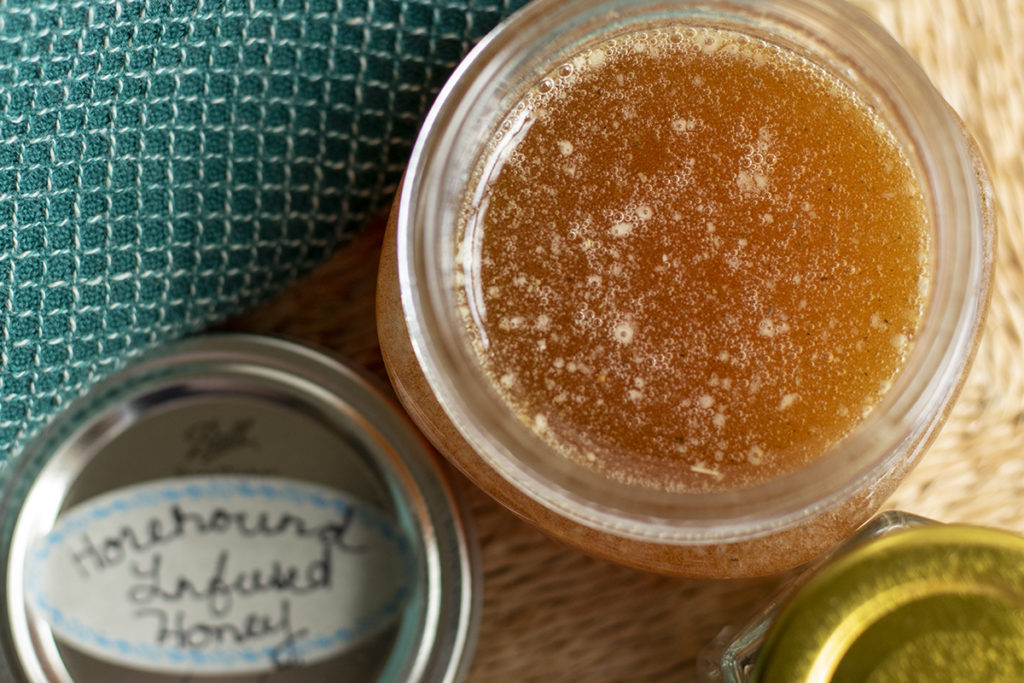
Do you grow herbs in your garden? Herbs have been an important part of human history long before we figured out how to farm. We relied on wild-foraged plants for medicine, and to this day, herbalists worldwide continue this tradition.
For most of us, though, herbs make their way into our food.
We grow them so we can enjoy things like fresh pesto in the summer or wonderfully fragrant stew flavored with thyme in the winter, or perhaps sip a hot mug of peppermint tea before bed.
While drying herbs is probably the most popular way to preserve them, today, I’d like to show you a way to capture the flavor of your favorite herbs using honey.
At the end of the season, when I’ve dried as much of my herb garden as I can, I start poking the scraggly stems left growing in the garden in mason jars and smothering them in raw honey.
After a few weeks, the honey is transformed into a magical elixir that can be added to tea, drizzled over fresh fruit or ice cream, used to soothe sore, scratchy throats, flavor marinades and make sauces.
Infusing honey with your favorite herbs is a practical and delicious way to enjoy their flavor year-round.
I Heartily Recommend Growing Herbs
While I love my veggie garden, my heart is in my herb garden, which grows from my balcony railing. I’m always snipping a sprig for my water or cup of tea, grabbing herbs for a vinegar shrub, or putting together a bouquet garni for something I’m cooking.
If I’m standing on my balcony, rarely do I come back inside without first brushing my hand over the mint or sage.
Many of my herbs follow me inside when the seasons change so I can continue to enjoy them fresh. But my little pantry apothecary keeps me well-stocked until I can get back out and grow more next spring.
There are several jars of herb-infused honey mixed in on the shelves among the dried herbs.
If you don’t already grow herbs or would like to expand your variety, Rural Sprout is an excellent resource for herb gardening. Whether you want to grow a culinary herb garden or perhaps you’d like to grow a garden full of herbs to create herbal teas, we’ll help you get there.
The nice thing is most herbs can be kept very compact, making it easy to grow them in containers. Many of them do well on a sunny windowsill during the winter months too.
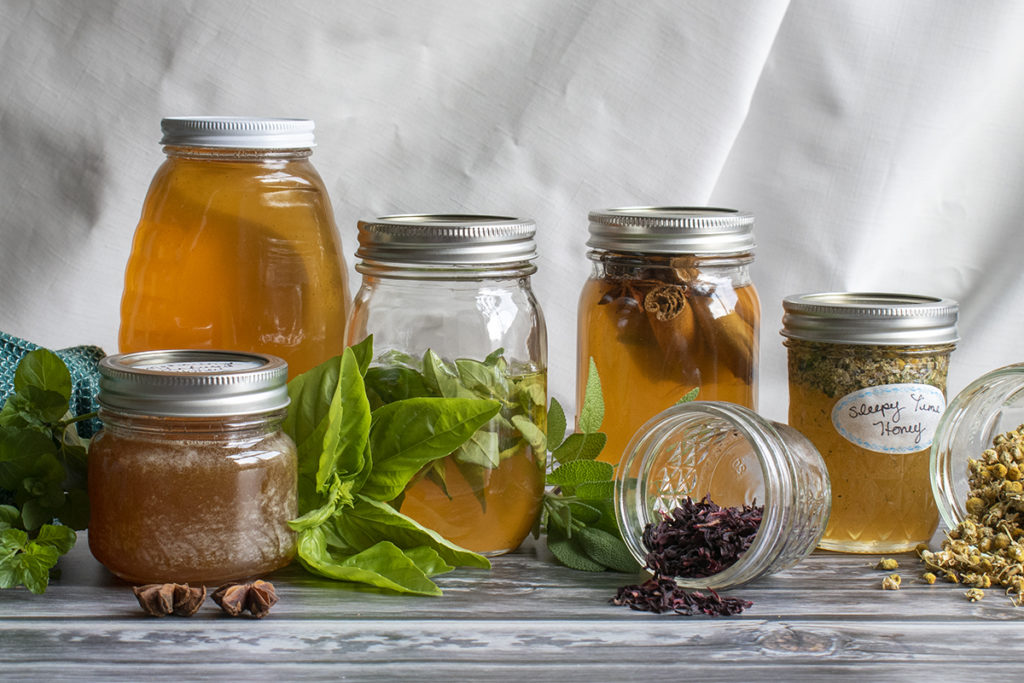
Raw Honey is the Best
To enjoy the very best health benefits that these herbal infusions have to offer, I highly recommend using raw honey. Local raw honey is even better. Ingesting local pollens can help seasonal allergy sufferers, not to mention you’re supporting your local beekeeper.
Sanitize Your Jars and Lids
Like most preservation methods, cleanliness is important to prevent spoilage. Sanitize the jars and lids you plan on using both for infusing and storing your finished honey.
If you have a dishwasher, using jars hot out of the washer is a great way to warm your honey infusion and ensure clean jars.
Infusing Honey with Herbs: Two Ways
There are essentially two common ways to infuse honey with herbs; both are simple to do. Choosing which method to use comes down to your choice of herbs and, sometimes, how soon you want to enjoy your herb-infused honey.
1. Infusing in a Jar
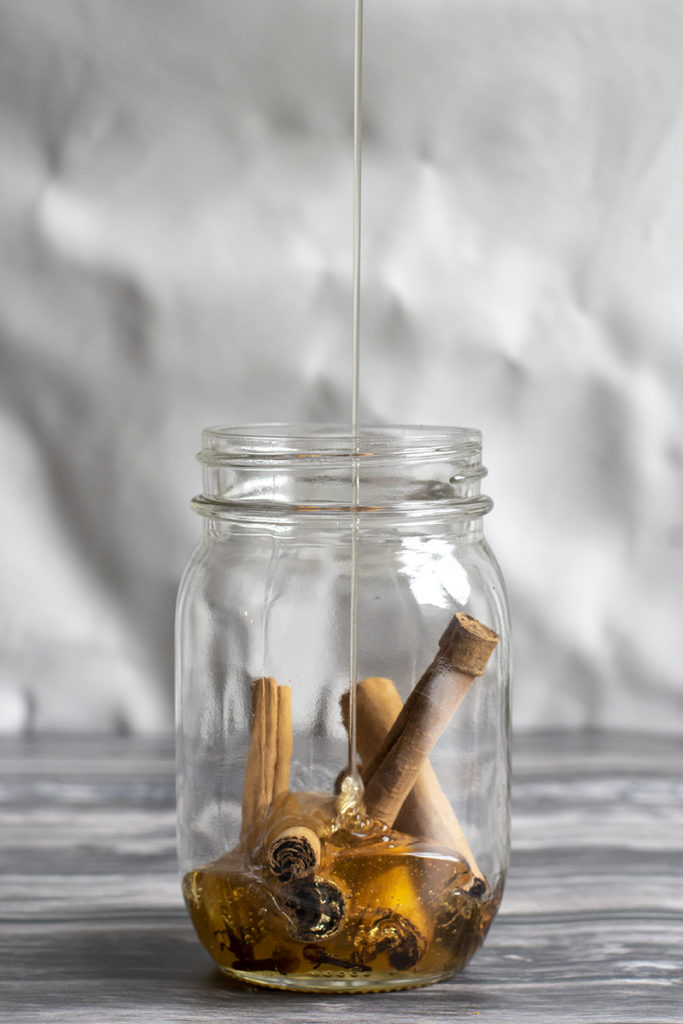
The easiest method by far for infusing honey with herbs is to combine the herbs, dried or fresh, with the honey in a jar, mix them well, and then wait.
This is the best way to infuse when using most fresh herbs, which I’ll explain later. If you’re using dried herbs, it’s important to consider their density. Most dried leaves or flowers should infuse just fine in a jar with a little patience.
The most difficult part of infusing herbs in a jar comes when you’re using dried ingredients.
All those leaves and flower buds tend to hold onto air quite well, so mixing the honey in with them can be a little tricky. They’re also very light, so they’ll tend to float on top of the honey for the first week or so.
Place your ingredients in the bottom of the jar and top with honey. Use a clean chopstick or wooden spoon handle to stir the honey into the herbs. Wait a few minutes, then stir it again and add more honey. Continue in this manner until you’ve added the full amount of honey.
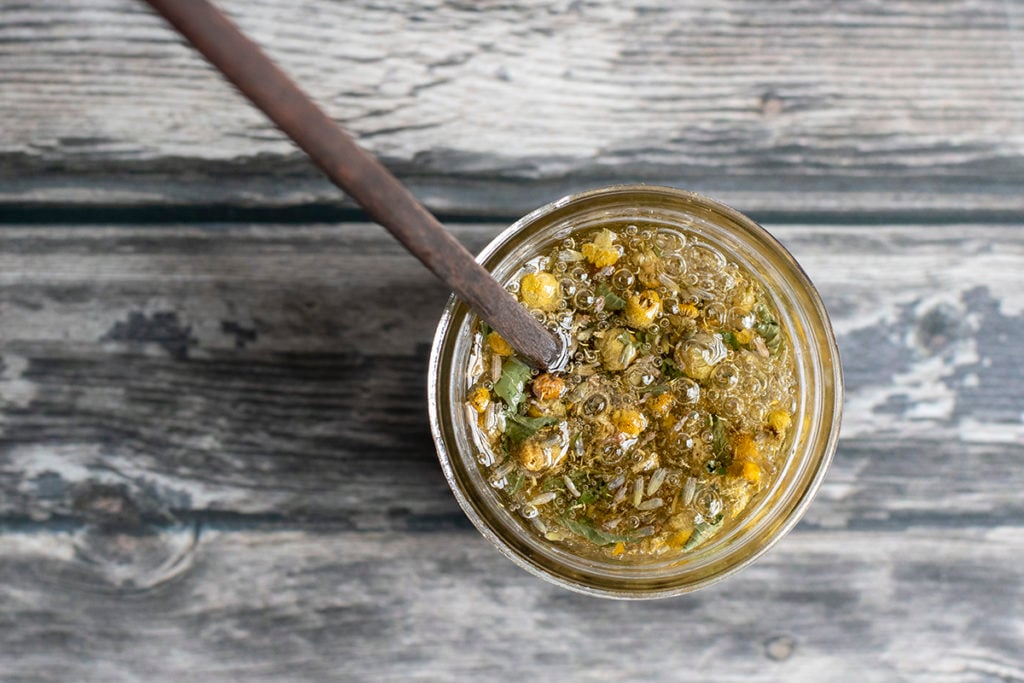
Seal your jar tightly and place it someplace warm. A pantry or upper cupboard, the top of the fridge or even a warm windowsill are all good places.
Turn the jar on its end every day (or at the very least whenever you think of it) to ensure that the honey stays mixed with the herbs and seeps into them. Over time, the herbs should stop sitting on top of the honey.
Let your mixture infuse for 2-3 weeks, longer if you’re patient and want a stronger flavor.
When you’re ready to store your finished honey, place the sealed jar of honey and herbs in a dish full of hot water for five minutes. Gently warming the mixture first makes it easier for the honey to drain off of the herbs. Strain the honey into a sanitized jar using a fine mesh strainer. Let the mixture sit for ten minutes to give the honey plenty of time to drain.
Don’t throw away the herbs!
Save them and use them to make tea or add them to a marinade or salad dressing.
Once you’ve strained the honey, seal your jar and label. Store the finished honey somewhere cool and dark.
Infusing in a Jar with Fresh Herbs
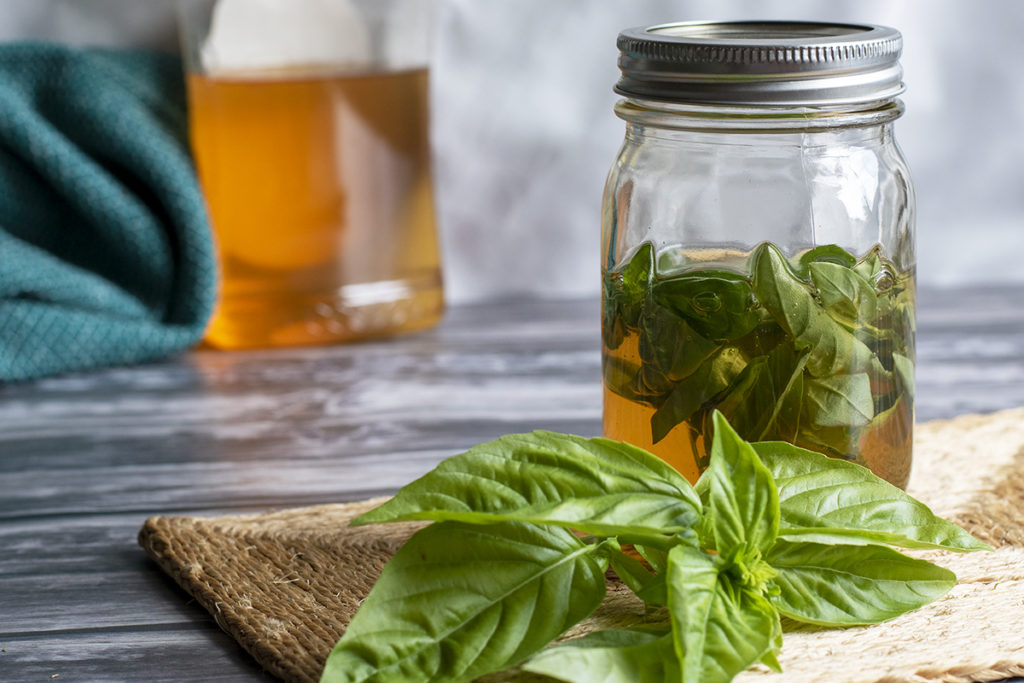
Tender leaves such as basil, lemon balm or mint are excellent choices to use to infuse honey. Be sure to choose leaves or sprigs with no blemishes or pest damage. Brush any dirt off of the leaves. If you can, pick the topmost leaves from the plant as they are less likely to have dirt splashed on them by the rain.
When infusing with fresh herbs, you’ll need around ¼ cup of fresh leaves, lightly packed, for each cup of honey.
Gently roll the leaves in your hand and add them to the jar. Bruising them will help to release the oils. Cover with a cup of honey. Seal the jar tightly and proceed as above.
It’s important when using raw honey to be sure your fresh herbs are completely dry. Any moisture could cause your honey to begin to ferment. (We’ll save making your first batch of mead for another day.) If it’s rained recently, wait for a few dryer days before picking your herbs, and pick them mid-morning after the dew has dried and before they are parched by the afternoon sun.
2. Warming/Cooling or the Heat Method
This is a great way to infuse honey with herbs when you can’t wait. Use this method if you need a quick gift or herbal-infused honey for a sore throat.
It’s also the most reliable method to use for tougher herbs and spices.
Unlike alcohol or vinegar, honey isn’t all that good at drawing out the oils from woody herbs like rosemary or fresh time, barks like cinnamon, and cardamom and anise pods without the assistance of a little heat.
To infuse honey with heat, place all of your ingredients in a small saucepan and warm over low heat, stirring frequently. Once the honey becomes thinner and more syrupy, turn the heat off and let the honey cool down for about an hour.
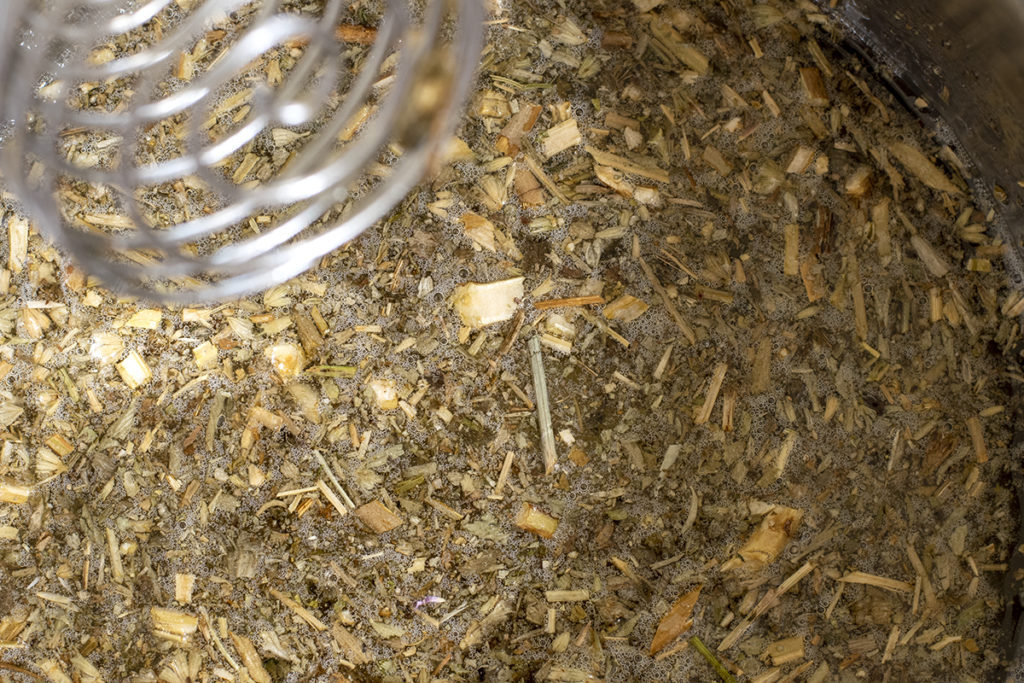
Repeat this process of warming and cooling, being careful not to let the honey boil several more times until you get the desired taste you want in your herbal-infused honey. (Be sure to use a clean spoon or chopstick each time you taste the mixture.)
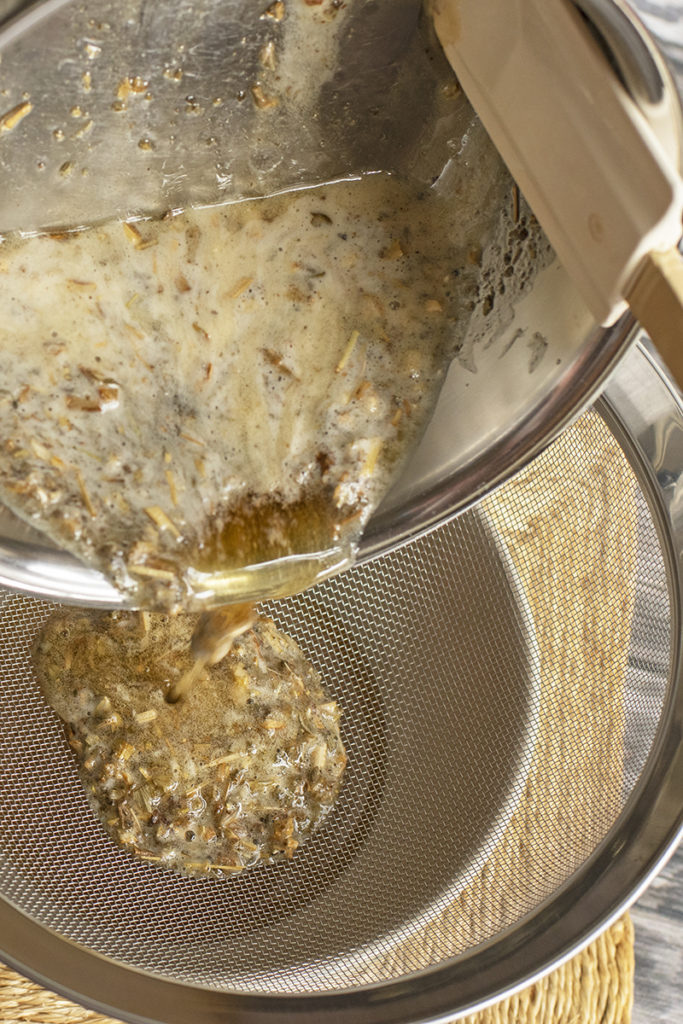
Immediately strain your finished honey, as I’ve noted above, after the final warming. Seal the honey, and store your jar in a cool dark place.
A note about using raw honey for the heating method.
If you’re using raw honey, it’s especially important not to overheat the honey, as you will kill off the naturally occurring enzymes and yeasts living in honey. Remember, raw honey is a living food, and you want to preserve all those good-for-you microbes.
You will notice white foamy bits developing in the honey as it’s warmed; these are tiny bits of beeswax. Once you’ve strained your honey, you can easily skim this foamy layer off the top.
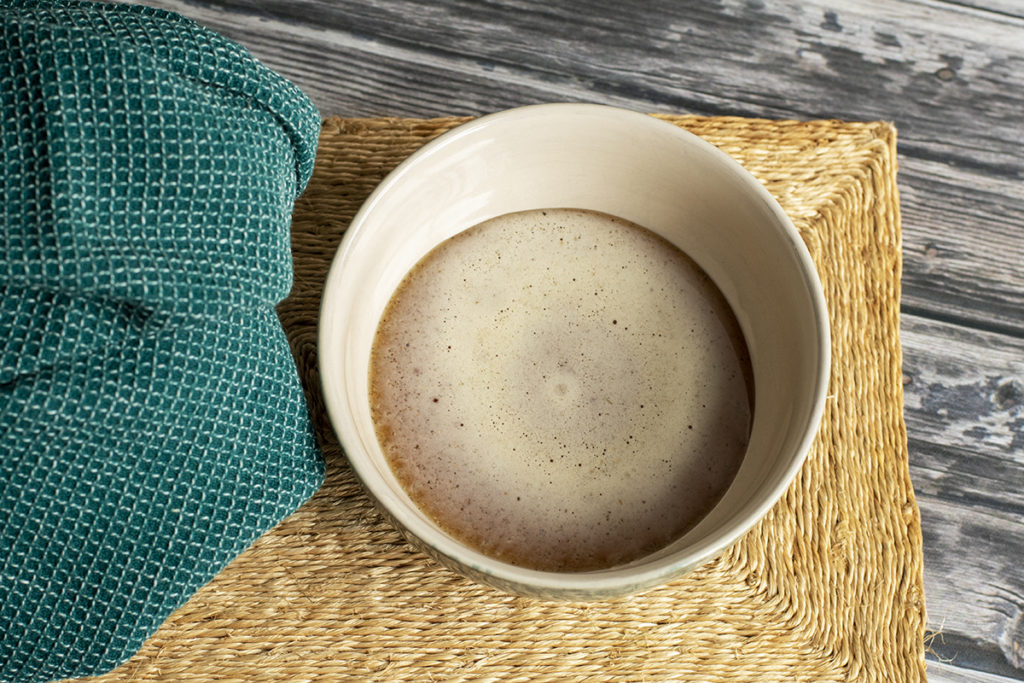
However, I highly suggest stirring it back in, again, so you don’t miss out on any of the health benefits of eating raw honey.
And that’s all there is to it. Infusing honey with herbs is highly addicting. Once you make your first jar, you may find you end up with a pantry full of herbal flavored honey. To help get you off on the right foot, I’ve included a couple of recipes.
Sweet Dreams Honey
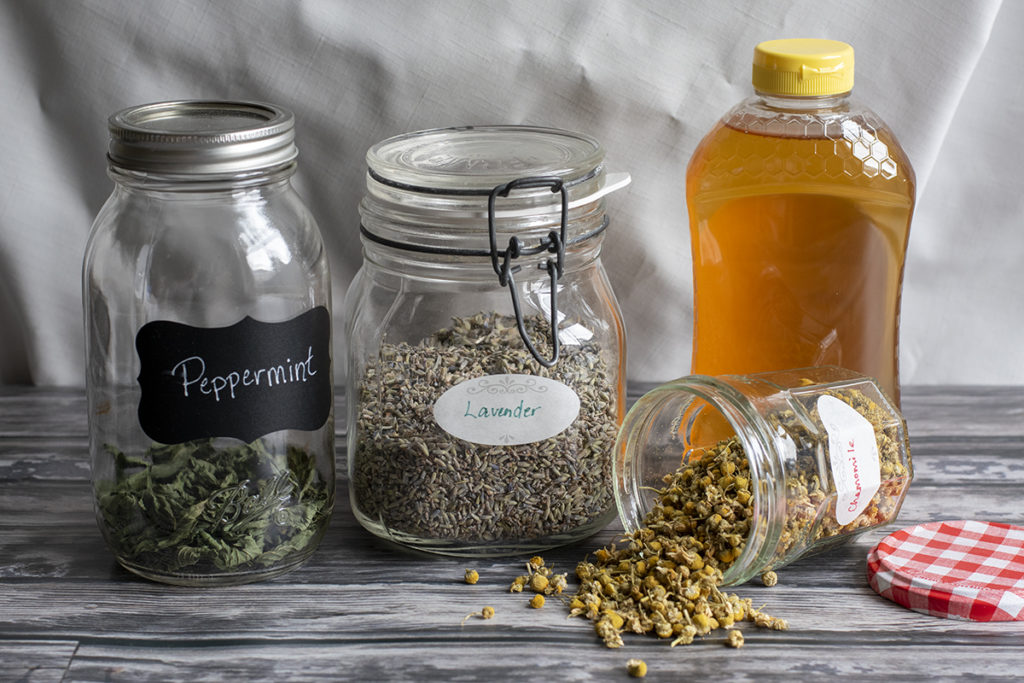
Use this soothing honey and flavor a cup of chamomile tea. You’ll be off to sleep before you know it. My boys love this honey, and they often request a teaspoonful in their favorite tea – Celestial Seasoning’s Sleepytime Tea.
Lavender, chamomile and peppermint are three herbs well known to help you get a good night’s sleep. If you don’t grow them in your own garden, they are easy enough to find in most health food stores. Or you can always order them online from my favorite online herb shop – Mountain Rose Herbs.
You can use the heat method to infuse your honey if you want to use it right away, or simply put the jar in a warm place and turn the jar every few days. The honey will be ready to strain and use in 2-3 weeks if you use the latter method.
What You’ll Need
- One sterilized 8oz jar and lid
- 2 tbsp chamomile flowers
- 2 tbsp dried peppermint
- 1 tbsp dried lavender buds
- Optional 1 tbsp dried catnip (it has the opposite effect on us humans)
- 1 cup or enough honey to fill the jar to within ½” of the top
Spicey Chai Honey
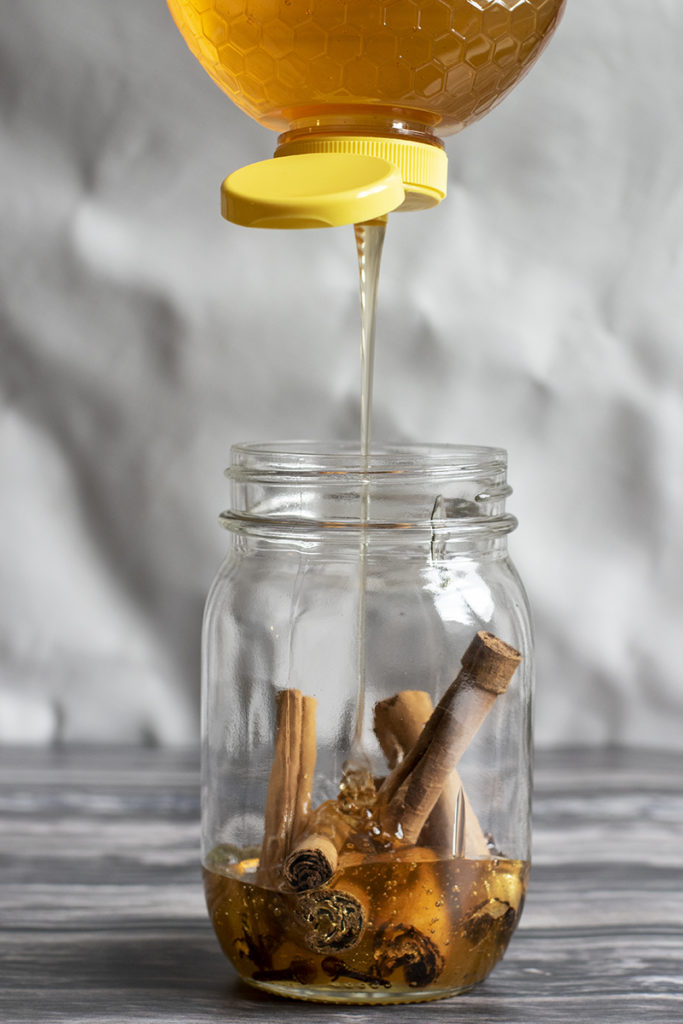
This honey is the perfect blend of warming spices. Be sure to keep a jar on your counter for the winter months. If you double the recipe or even triple it, small jars of the finished honey make for a thoughtful holiday gift.
Because all of these spices are either a bark or a woody spice, it’s best to use the heat method to infuse this honey. However, if you have the time and patience, you can make it in a jar, provided you have a nice toasty spot to keep it in.
If you are jar-infusing, you’ll want to let this blend infuse for a month or two at the least. Dip a clean chopstick in the jar and taste the honey after the first month. Strain the spices when it’s to your liking.
What You’ll Need
- One sterilized 8oz jar and lid
- 2 whole star anise
- 5 cloves
- 2 cardamom pods
- 3 sticks of Ceylon cinnamon sticks (trust me, you want the good stuff) broken into pieces
- Optional 1 tbsp dried orange peel
- 1 cup or enough honey to fill the jar to within ½” of the top
Soothing Horehound Honey
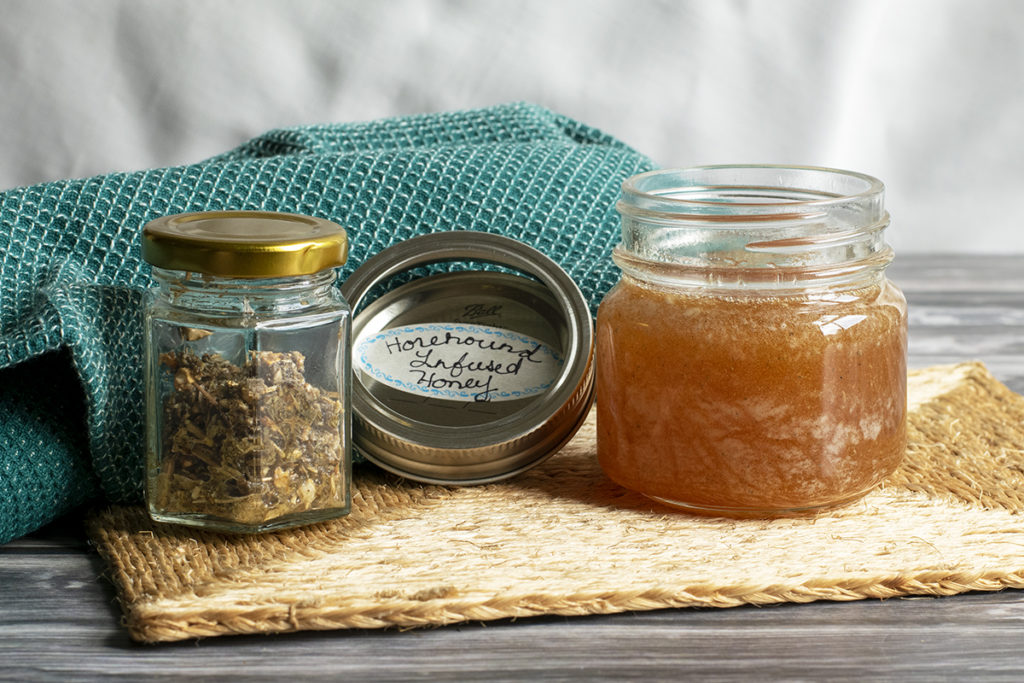
I’m a huge fan of horehound for soothing scratchy throats during the winter. As a kid, whenever I had a sore throat, Dad would give me a horehound hard candy to suck on. It did the trick.
If you’ve never tasted it before, horehound has a very dark, almost molasses taste with a slightly bitter finish. The honey balances it all out nicely.
If you’ve got a serious cold on your hands, use this honey to make up a batch of pine needle cough syrup. And don’t forget to take your fire cider, too.
Use the warming/cooling method for this particular recipe. I feel you get a better infusion.
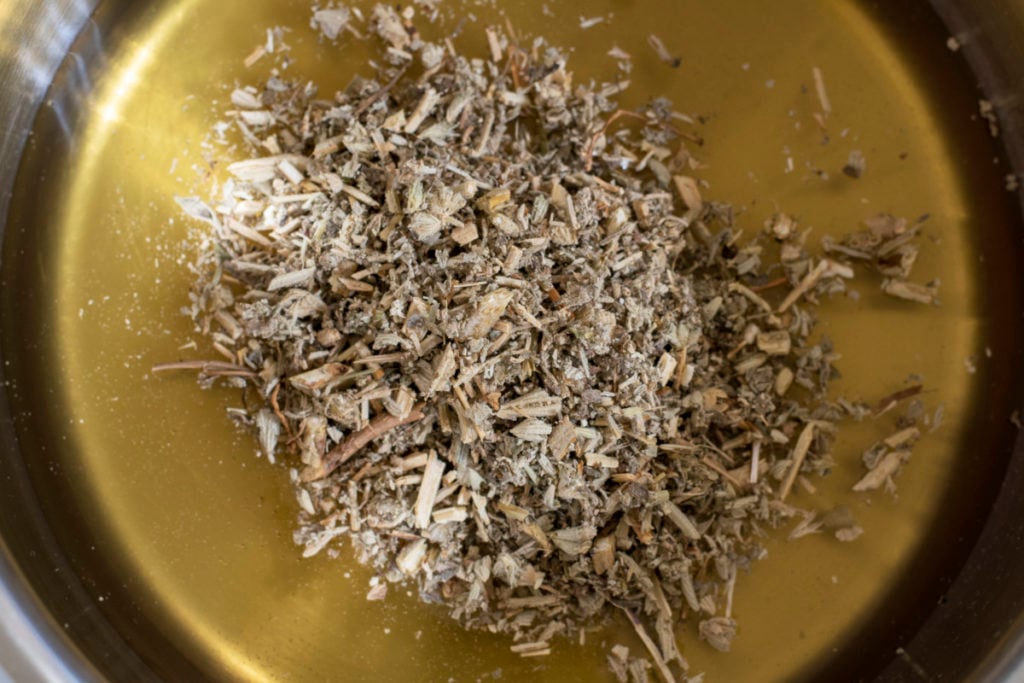
What You’ll Need
- One sterilized 8oz jar and lid
- 2 tbsp dried horehound
- 1 cup or enough honey to fill the jar to within ½” of the top
That should be enough to get you started.
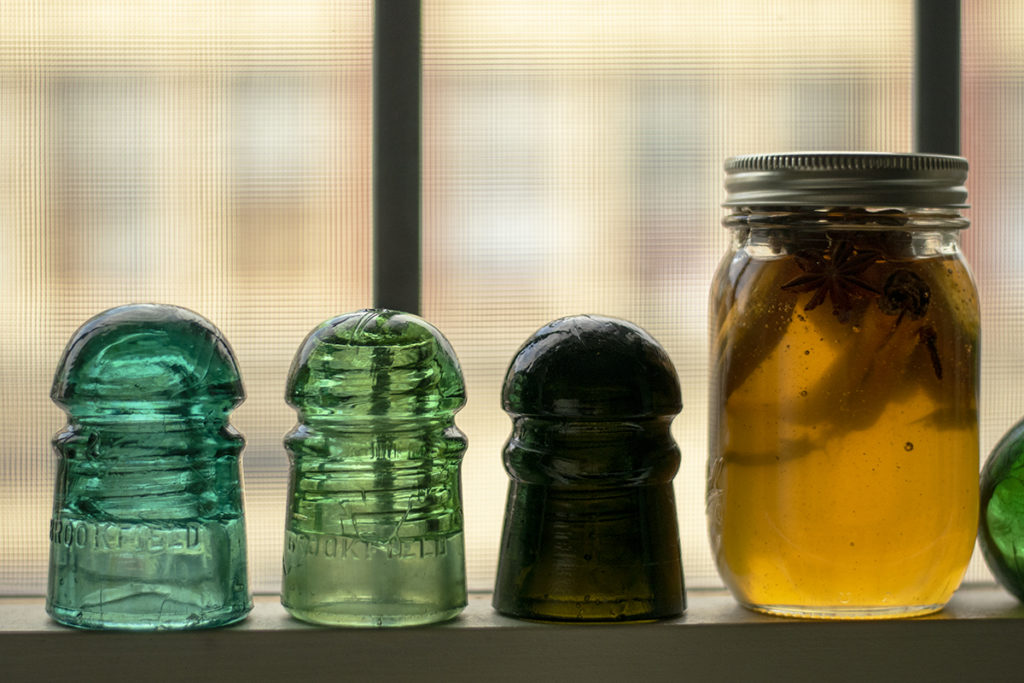
Experiment and try infusing flowers too, hibiscus-infused honey is quite tasty and is a gorgeous ruby red. Lemon balm makes for a lovely and bright honey, perfect for adding to a cup of hot tea. Mint-infused honey is a cooling addition to homemade lemonade and iced tea.
Take a walk through your herb garden; I’ll bet inspiration will strike, and you’ll be off to buy a few jars of honey from your local beekeeper.

Get the famous Rural Sprout newsletter delivered to your inbox.
Join the 50,000+ gardeners who get timely gardening tutorials, tips and tasks delivered direct to their inbox.

